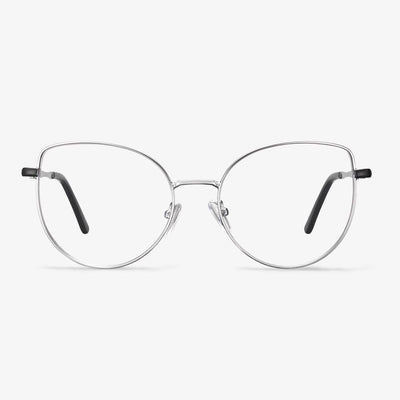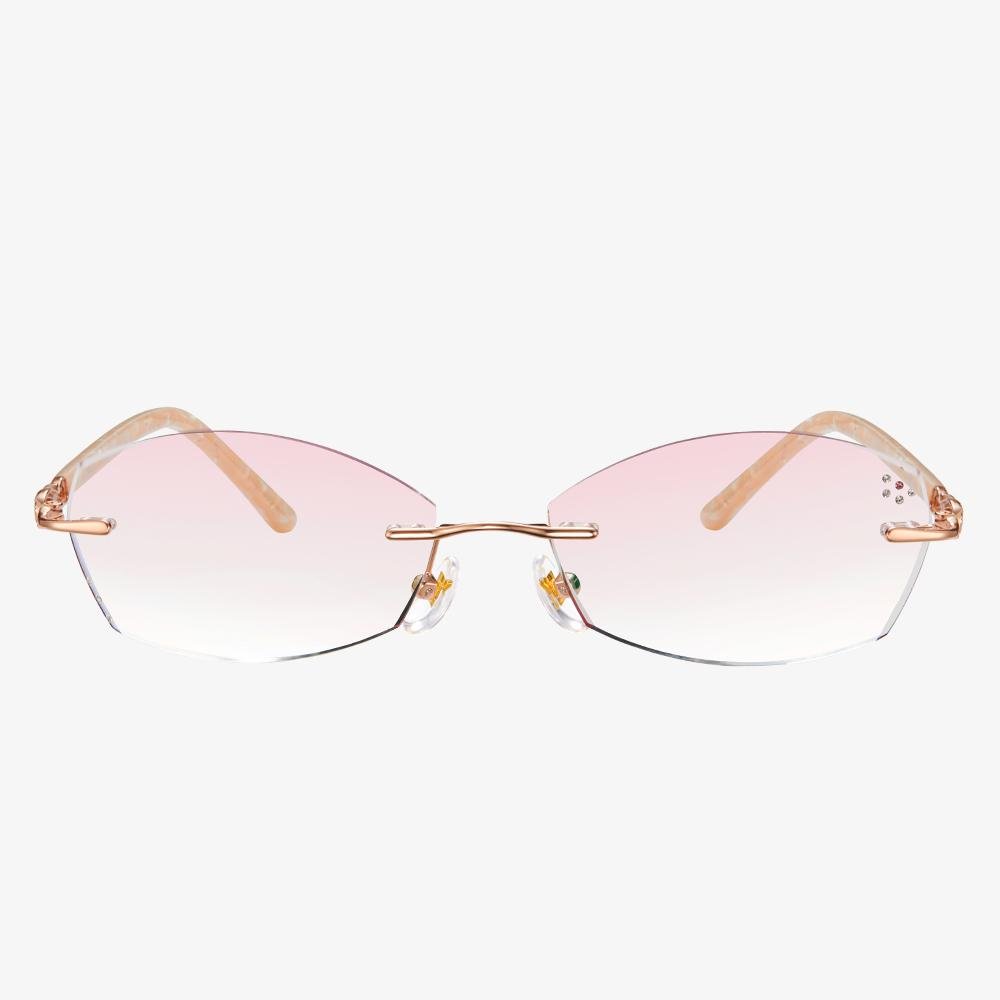The Types of Blue Light Glasses
Computer Glasses - Clear Lenses
First, we will show you the computer glasses which have clear lenses, These glasses are made to be used when working on your computer, smartphone or while watching TV. The best computer glasses can filter 5-30% of all blue light.
Night Driving Glasses - Yellow Lenses
When driving at night, the blue light glasses with yellow lenses would be suitable. These blue light lenses are good at removing more of the highest energy blue light, around 440 nm and they are also able to distinguish traffic lights when driving at night. These glasses can block around 65-70% of blue light.
Blue Light Glasses for Sleeping - Red Lenses
The blue light glasses for sleeping have red lenses. The best blue light glasses come with red lenses and they block 99.5%-99.9% of all blue light and a large amount of the green light spectrum, from 495-550 nm.
After knowing the different types of blue light glasses, we will show you how to perform the blue light glasses tests.
The superior properties of titanium glasses
They are light, around 40% of stainless steel. The hardness is high, about twice that of stainless steel and common steel, twice that of iron, and six times that of aluminum. In a world of ultra-low temperatures, titanium becomes harder and more superconductive, while steel becomes weaker and less capable. They have corrosion resistance, with no rust. Titanium does not rust in the sea for five years, while steel corrodes and deteriorates in seawater. The thermal conductivity of titanium is about the same as that of stainless steel. They are non-allergic materials. Titanium is a harmless material to the human body. More because it does not have an allergic reaction to the human body, it is one of the few metal materials used in medical science.
The origin of modern eyeglasses
The origins of modern glasses can be traced back more than 1,000 years. In the Middle Ages, the reading stones used by monks were glass spheres, sometimes filled with water and placed on objects to magnify them.Glassblowers in Italy created reading stones, similar to modern hand-held magnifying glasses. The reading stone can be placed on the wearer's nose or in front of the face. Later, Spanish craftsmen built the first cobra-framed temple in the 17th century. They tie ribbons or strings to the frames and tie them around the user's ear.
In the 18th century, Edward Scarlett created the first wearable glasses, providing more comfort for eyewear wearers. These early glasses had glass lenses embedded in heavy frames made of wood, lead, or copper. Natural materials of leather, bone, and horn were later used to make the frames. In the early seventeenth century, lighter steel frames were invented. As eyewear continued to evolve and prescription accuracy improved, the trend for eyewear to become more fashionable began. In the 18th century, bifocal lenses appeared, making it possible to correct upper myopia and lower presbyopia. Later glasses were designed to be fixed by a ribbon or by applying pressure to the bridge of the nose. In the 1980s, plastic lenses were introduced, providing a more durable alternative to glass lenses. Ultimately, the glasses used today are the result of centuries of technological and intellectual advances.
The design evolution of progressive lenses
Spherical and aspheric designs
The design of the front surface of the far-use area of the early progressive lens is similar to that of the ordinary spherical single vision lenses, so it is called a spherical progressive lens. Since 1974, the front surface of the far-use region of the lens is designed to be aspheric by designers, which not only reduces the peripheral aberration but makes the lens thinner, lighter, and less powerful.
Hard and soft design
For hard design, the channel is short, and the gradient is large. The near-use area position is high. The effective visual area of remote and near-use areas was larger. Peripheral astigmatism is relatively concentrated. Because surrounding astigmatism increases rapidly and the distribution is dense, the curve effect is more obvious. The gradient area is narrow. It is more difficult and takes longer for wearers to adapt.
Lenses with soft designs have slower gradients, longer gradients, and wider gradients. The angle of rotation of the eye from the far area to the near area is greater. It's easier to get used to. Compared with the hard design, the effective visual area of the far and near use areas is smaller, and the location of the near use area is lower.
Single, diverse, and individualized design
Initially, the progressive lenses used a single design, in which each basic curve was scaled equally and a luminosity combination was added within the range of its semi-finished lens blanks. The steepest base curve uses the same lens design as the flattest base curve. Lenses designers quickly realized that the overall performance of the lens could be improved by microcustomizing the lens design, leading to progressive lenses with multiple designs. This kind of design is called diverse design. By the mid-1990s, there was the emergence of individualized lens designs. In addition to using different gradients, these first individualized lens designs used steeper baseline curves with a slightly larger approach area to compensate for increased magnification and reduced field of view.
Symmetrical and asymmetric design
There is no difference between the left and right eyes in the symmetrical design of progressive lenses. As the eyes turn inward when they see near objects, the gradual gradient area gradually tilts to the nasal side from top to bottom, so the left/right progressive lenses should be rotated clockwise/counterclockwise respectively during processing. An asymptotic lens with left and right eye divisions is called an asymmetric design. The gradient is gradually and moderately inclined to the nasal side from top to bottom. The refractive force, astigmatism, and vertical prism of the two sides of the left and right gradient of the asymmetric design lenses are basically similar. At the same time, considering the characteristics of eye movement parameters in binocular vision, the peripheral aberrations of the corresponding positions of the left and right lenses were appropriately balanced to improve the visual effect of the wearer.
Disadvantages of Progressive Lenses
It takes time to adapt to the lenses. It can generate poor visual resolution (blur). There is also a geometric distortion of the field of view. Some of the problems with advanced progressive lenses occur when walking up and downstairs. Because the reading correction is at the bottom, the staircase may look like a rebound. However, this is all done to accommodate your progressive lenses, and within about two weeks the shortcomings should disappear. It takes some time to get used to progressive lenses. Changes in vision occur at the rim of the lens, leading to slight changes in peripheral vision. For some people, change is a little difficult. Because the first wear of progressive lenses may occur slight dizziness, shaky walking. One should be careful when they exercise or go Up and down the stairs. Because the sense of space changes, the distance judgment of the object, the sense of depth changes, people who first wear should not immediately drive or do strenuous exercise. When looking closely, the eyes need to turn down, they have mild discomfort in the eyes. The object becomes blurry when they look at it through a blurred area around the lens. Therefore, new wearers turn their heads more and turn their eyes less when they see things and try to use the far, near, and middle distance areas to see the object.
Where to Buy Anti-Reflective Glasses?
From the above, you have learned some benefits of anti-reflective glasses. You may ask where I can buy them. To do that, you can buy them from the local optical store. But now, you can buy them online and it can bring you great convenience.
So, if you want to buy anti-reflective glasses online, Koalaeye Optical is recommended. It provides all kinds of eyeglasses, sunglasses, and frames. What’s more, Koalaeye Optical provides a free shipping service so that the package will be mailed for you with your great convenience.
What Are Non-Prescription Glasses?
Nowadays, many people wear glasses for a variety of reasons and not just for vision problems. In fact, many people wear non-prescription glasses as a fashion statement. This trendy accessory can make you more fashionable.
What are non-prescription glasses? It is important to note that the non-prescription glasses have no corrective power, while non-prescription reading glasses offer some level of magnification, enlarging what you see up-close.
If you don’t have a vision problem, wearing Plano glasses shouldn’t be a problem since they will neither damage your eyes nor cause structural issues. Some non-prescription specs, such as the type that blocks damaging blue light, can actually be beneficial to your eye health.
What Are the Benefits of Non-Prescription Glasses?
In this part, we will show you the benefits of non-prescription glasses and show you what you need to know before buying the non-prescription glasses.
Protection: the non-prescription glasses would provide protection for your eyes from dust, direct sunlight, and computer radiation. In addition, these glasses would have to be enhanced with special coatings.
Fashion: Wearing non-prescription glasses enables you to look more fashionable. The best part is that you can select a pair of non-prescription glasses that have the features you prefer. Besides, many frames are made from high-quality materials that make them durable. They are comfortable and lightweight, which everyone can appreciate. Non-prescription glasses are also available in a variety of sizes, shapes, colors and styles so there will always be something that matches your needs and even your personality.











































